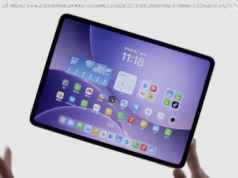Right after its opening I/O 2018 keynote, Google launched the first public beta of Android P. For the first time, it opened up the beta software to users
Right after its opening I/O 2018 keynote, Google launched the first public beta of Android P. For the first time, it opened up the beta software to users with devices other than Nexus and/or Pixel phones. If you haven’t signed up to the beta program yet, and want to test the preview software, follow our simple guide on how to do that.
Perhaps the biggest change in Android P is the new navigation system, and with it representing something of a change from previous control methods, it may just take some getting used to. At least, to begin with. Here’s how to make the most of the new navigation and multitasking interface.
Along with Android P’s first public beta release came a brand new gesture based navigation method. That means, instead of the usual age-old back, home and recent apps buttons, you just have the single virtual pill-shaped home button.
Using it is pretty simple, but you first have to activate it. The traditional buttons are still the default method when you boot up the phone running Android P.
It’s worth noting, Google may change this method in between now and when the software is officially available, this is beta after all. So, head to Settings > System > Gestures and then find the “Swipe up on Home button” option. Tap on this and then activate the toggle switch. Once this is done, you’ll notice the usual three-button virtual bar changes to become a single home button and a back button (the latter disappears when not relevant).
Once activated, when you swipe up from the bottom of the screen, you get to the new recent apps view which has a card based system, similar to Web OS on the Palm Pre all those years ago.
These app card previews sit above the Google Search bar and a dock populated with your regularly used applications. To select the app you want you can swipe through the cards, but, you can also drag the little pill-shaped button left and right to quickly go full-screen and select a particular app.
This home button quick switching method becomes even more convenient when you’re in an app. You can drag this button right from any app that you’re in to quickly switch to an app, and then switch back again. You don’t have to go to the recent apps view. That can save you a lot of time if you just want to quickly go back and forth between two apps.
To dismiss apps from the recent apps view just swipe the app preview card upwards off the screen.
Similar to Android Oreo, to get to your app drawer, you long swipe from the bottom of the screen, or just swipe upwards from the recent apps view to get to your apps. This then fills up the screen with the app drawer, with your popular apps sitting in a custom row right near the top.
The app drawer, as previously, has a search bar in it so that you can search for any of your apps by name, rather than having to go hunting for them manually.
As part of this new experience – now that there’s no recent apps button – there’s a new way to activate the multitasking split-screen view too. Go into the recent apps view, then press and hold the app icon above the preview card, now hit “split screen” button, and choose the other app you want to have sharing the screen.
As with Oreo, you can adjust where the split between the two apps sits on the screen by dragging it up and down.
So there you have it. New home button gestures on Android P. Again, worth noting this could change, and probably will look different if you have a non Pixel smartphone. Other manufacturers tend to have their own take on Android navigation and features.






